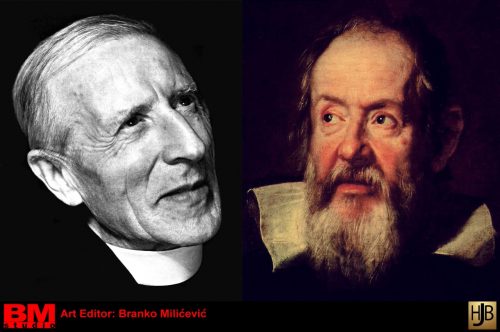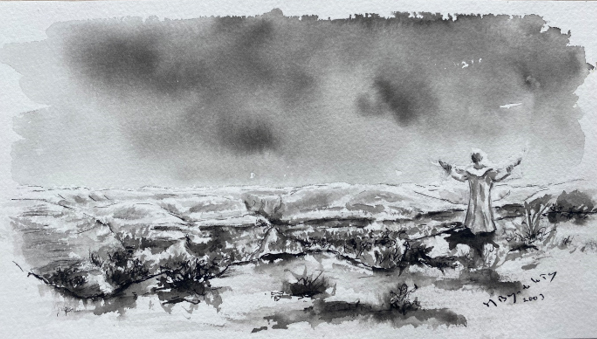A review by Father Peter Malone (Australia)

“God does not make the world. God makes the world make itself without God’s interference.”
Is that our idea of God, of the cosmos, of evolution? In the past, not so much agreement but, in more recent decades, a more visionary perspective on science and on religion.
The author of the quotation is the Jesuit scientist Teilhard de Chardin (1881-1955). For those who want to know who Teilhard was, how we came to his insights and conclusions, what it was like to be a prophet (not always welcome in his own country), what it was like to be enthralled by the cosmos, to be a visionary (sometimes hailed, sometimes ridiculed and denounced), then here is an exhilarating two hours to introduce Teilhard or to become re-acquainted with Teilhard de Chardin, to become aware that we live in Le Milieu Divin (no need for translation).
This documentary by Frank and Mary Frost has been, literally, years in the making. As for so much from its long production (no matter how demanding for the filmmakers and their supporters). Travel to actual locations, tracking down photos and footage, lining up interviews and commentary. The visuals of the film are often magnificent, so much location photography – France for Teilhard’s early life and teaching career in Paris, England for his religious studies, China for his archaeological ventures, the US where he was “exiled” and where he died. Quite a range of locations which help bring Teilhard’s life to life.
The footage, as expected, includes many photos but also news and home film, which means that Teilhard is not just a character of books and articles but we see him as a person, joys and sorrows.
And, also as expected, quite a range of interviewees, many Jesuits as is fitting, scientists, museum curators…
In a way, one could say that Teilhard lived too early, a late 19th century figure soon after Darwin, in the spirit of the archaeological diggings of the early 20th century. And his early years as a Jesuit and as a priest in the time of church leadership and campaigns and strictures against “Modernism”. Teilhard and his creative writings, science, religion, spirituality, mysticism, led to some 20th century inquisitorial behaviour by those who were wary, sometimes shocked. And there were health and depression consequences for the targets.
A significant feature of Teilhard’s life, hands-on rather than philosophical/theological, was his four years as a stretcher bearer in World War I when he was in his mid-30s, surviving although some of his family did not. In many ways, war and archaeology, his life was down-to-earth.
But, back to the themes. First, some quotes:
Earth is throbbing with divine energy.
Matter is infused by spirit.
The traditional “Great Chain of Being” is a process, dynamic.
Teilhard died seven years before the opening of the Second Vatican Council and the greater opening up of Catholic thought from the 1960s which meant a greater awareness of what Teilhard wrote, its being more widely appreciated and accepted – and, as this film shows, still an inspiration for our times.








